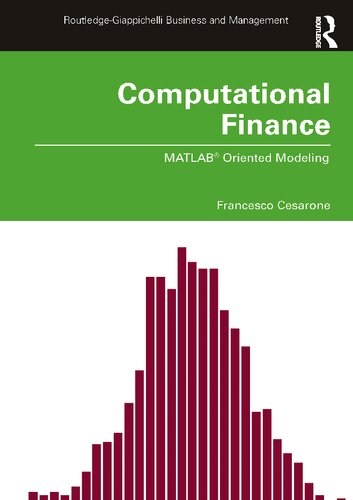

Most ebook files are in PDF format, so you can easily read them using various software such as Foxit Reader or directly on the Google Chrome browser.
Some ebook files are released by publishers in other formats such as .awz, .mobi, .epub, .fb2, etc. You may need to install specific software to read these formats on mobile/PC, such as Calibre.
Please read the tutorial at this link: https://ebookbell.com/faq
We offer FREE conversion to the popular formats you request; however, this may take some time. Therefore, right after payment, please email us, and we will try to provide the service as quickly as possible.
For some exceptional file formats or broken links (if any), please refrain from opening any disputes. Instead, email us first, and we will try to assist within a maximum of 6 hours.
EbookBell Team

4.3
98 reviewsComputational finance is increasingly important in the financial industry, as a necessary instrument for applying theoretical models to real-world challenges. Indeed, many models used in practice involve complex mathematical problems, for which an exact or a closed-form solution is not available. Consequently, we need to rely on computational techniques and specific numerical algorithms. This book combines theoretical concepts with practical implementation. Furthermore, the numerical solution of models is exploited, both to enhance the understanding of some mathematical and statistical notions, and to acquire sound programming skills in MATLAB®, which is useful for several other programming languages also. The material assumes the reader has a relatively limited knowledge of mathematics, probability, and statistics. Hence, the book contains a short description of the fundamental tools needed to address the two main fields of quantitative finance: portfolio selection and derivatives pricing. Both fields are developed here, with a particular emphasis on portfolio selection, where the author includes an overview of recent approaches. The book gradually takes the reader from a basic to medium level of expertise by using examples and exercises to simplify the understanding of complex models in finance, giving them the ability to place financial models in a computational setting. The book is ideal for courses focusing on quantitative finance, asset management, mathematical methods for economics and finance, investment banking, and corporate finance.